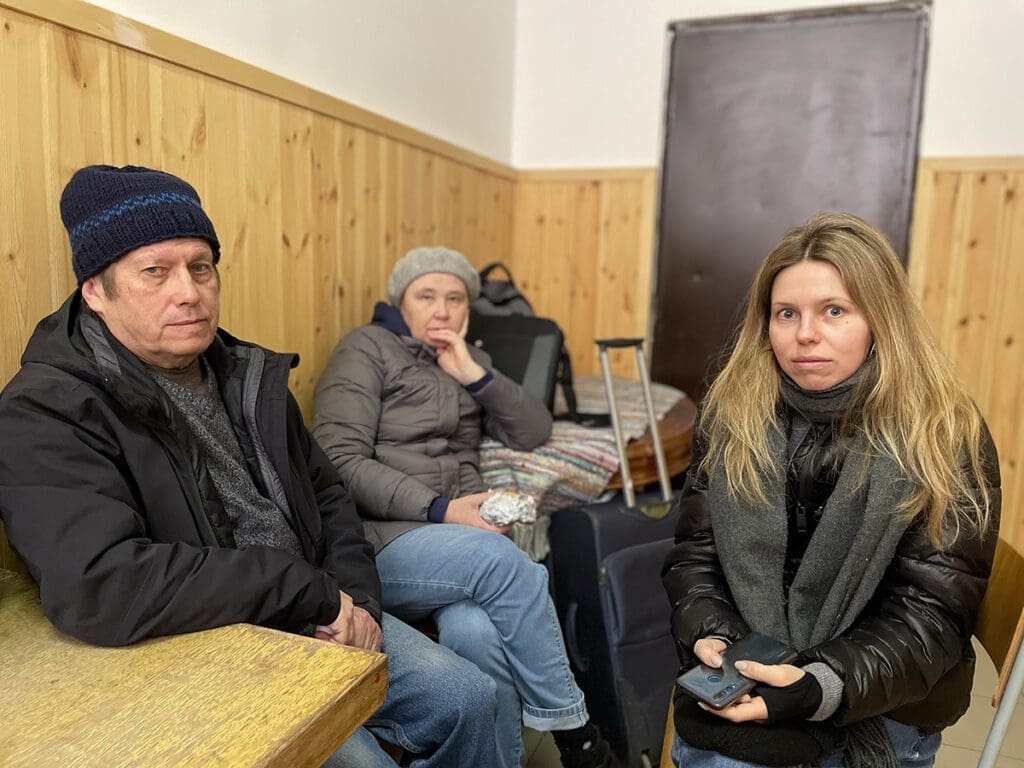Every year on 20 June the United Nations observes World Refugee Day. The date was chosen to commemorate the 1951 Convention Relating to the Status of Refugees.
CNEWA is no stranger to the challenges posed by the flight of peoples — the agency came into being during the great refugee crises that followed World War I. Nor is CNEWA unaffected by the current mass migration of peoples, now considered the greatest movement of peoples in world history. In many, if not most, of the countries where CNEWA works, this movement of peoples is having a devastating impact. In Ukraine, Syria and Ethiopia, people are suffering from violence, war and ecological degradation. In so-called “target” countries, Lebanon and Jordan for example, the sudden increase of a needy refugee population has put enormous pressure on already fragile economies.
The situation of refugees in 2022 is worse than it has ever been. Despite the furor and emotion surrounding the resettling of refugees in the United States, large countries are far less impacted by refugees than are smaller countries. For example, more than one-fifth, 21 percent, of the population of Lebanon (6.82 million) consists of refugees (1.46 million). Imagine if 21 percent of the U.S. population (334.7 million) were refugees. That would account for 70.28 million people; more than eight times the population of New York City. The impact, therefore, of a refugee population on a host country, its economy, society, culture and politics, is huge.

The U.N. estimates that “more than 100 million individuals were displaced worldwide as a result of persecution, conflict, violence or human rights violations” so far this year. The report also notes the world’s forcibly displaced population consists of 26.6 million refugees, 50.9 million internally displaced people, and 4.4 million asylum seekers — a total of 81.9 million people. Since many refugees go uncounted and unregistered, the number is indubitably higher.
Some people speculate that the largest number of objects human beings can visualize at one time is nine, or three rows of three. Whether that is true or not, it is certainly true there is no way we can visualize 81.9 million people. It is simply beyond our capabilities. The numbers are simply unimaginable. As finite human beings, we have to face the uncomfortable fact that it is difficult to feel compassion for what is unimaginable.
The situation of refugees in 2022 is worse than it has ever been. … The U.N. estimates that “more than 100 million individuals were displaced worldwide as a result of persecution, conflict, violence or human rights violations” so far this year.
Most people simply shut down when faced with suffering on such a scale.
Sometimes, however, analogies or comparisons help to make the unimaginable a bit more graspable. When we compare something we know (or think we know) with something unimaginable, the unimaginable becomes a bit more concrete. It is estimated that at the time of Jesus (who, according to Matthew, was a refugee in Egypt), the world’s population was about 200 million people. At the time of Jesus, a refugee population of 82 million people would have comprised 42 percent of the population of the entire planet!
Today, the European Union (E.U.) consists of 27 member countries, of which only one — Germany — has a population larger than the world refugee population. Twenty-two E.U. countries have populations less than half of the world refugee population. These comparisons indicate that we are facing a humanitarian crisis of incredible proportions.
The problems highlighted by World Refugee Day are daunting almost beyond belief and certainly well beyond the resources of any single country, regardless of how wealthy and powerful.
One of the more promising approaches recently has been the study of the “drivers of emigration,” that is, those factors that motivate or force people to leave their homes and go elsewhere.
“Drivers of migration include economic, demographic factors and environmental factors, and social and political dynamics. People may migrate to access better economic, employment and educational opportunities for themselves and their families,” the U.N. notes. “Some migrate due to lack of access to fundamental human rights such as health, food or basic education, and due to discrimination, poverty or separation from family. They may move in response to crisis — both natural and human-made — and, increasingly, in response to environmental change.”

By focusing on the drivers of emigration, the U.N. is attempting to remediate those conditions that cause people to leave their homelands, that is, to solve the problem at its source. Clearly it is a multi-faceted challenge. While remediating the drivers of emigration, we are still faced with the millions of people who are already in a state of flight, have already left their homes and are living in strange and not always welcoming environments.
This is a global problem — hence, World Refugee Day. The international community must work together, not only to remediate the drivers of emigration, but also to help those people who have become refugees and those countries that receive them.
Pope Francis in his encyclical “Fratelli tutti” profoundly recognizes that a worldwide crisis is simply insoluble without a worldwide solution. The U.N. World Refugee Day calls us to worldwide awareness and worldwide action to achieve this solution.